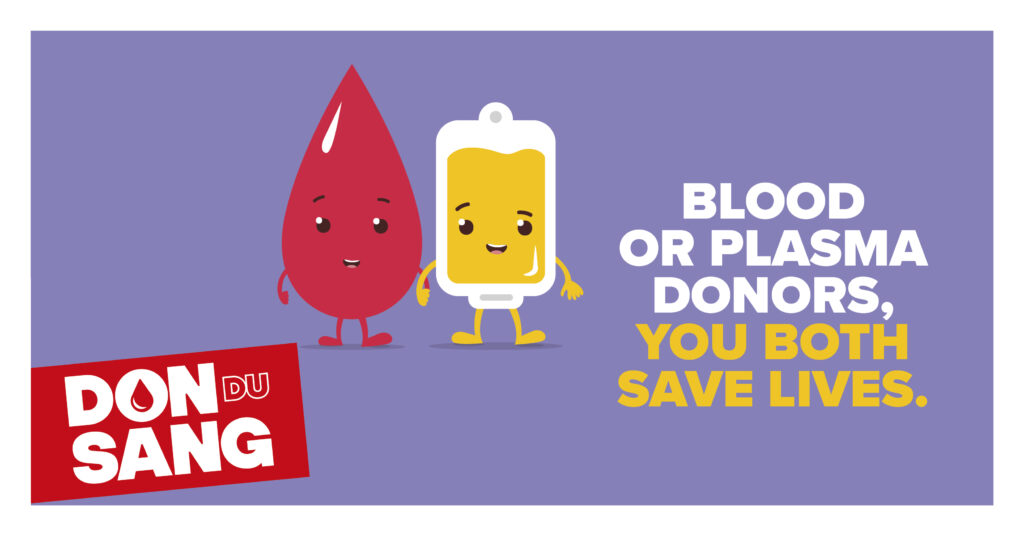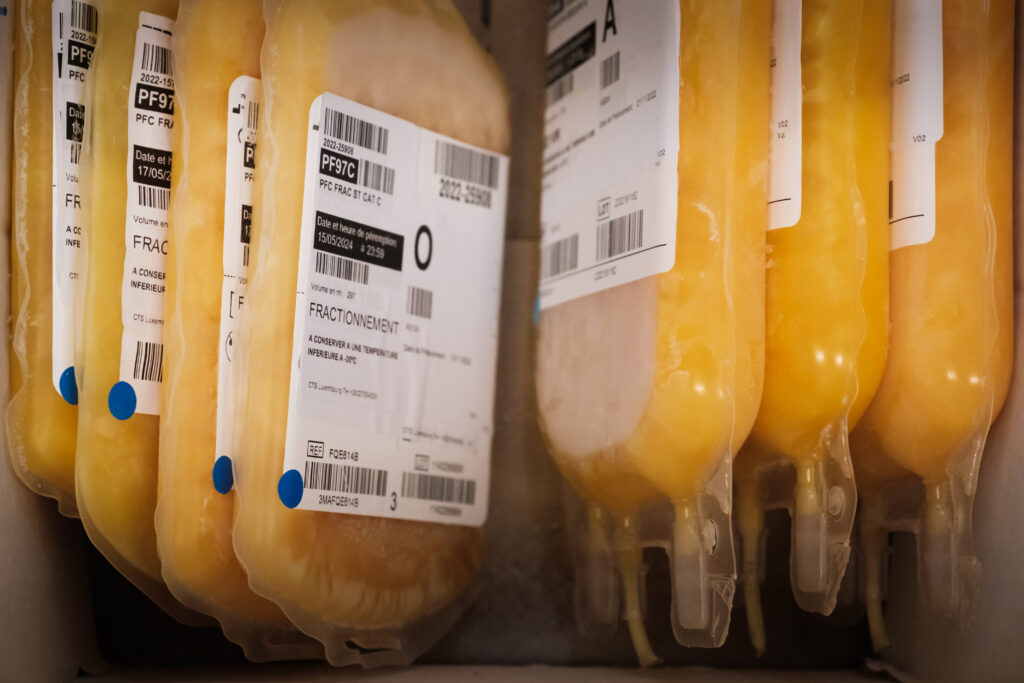05 September 2024

To increase awareness of plasma donation and attract new donors, the Luxembourg Red Cross is launching a major public awareness campaign.
Plasma, which makes up for more than half of the blood’s volume, is incredibly valuable. It is primarily used in the production of life-saving medicines for patients with rare and/or immune diseases.
“Plasma is used, among other things, to treat burn victims, critically injured patients and those in intensive care,” explains Dr. Anne Schuhmacher, medical Director of the Blood Transfusion Center. “Like blood donation, plasma donation, saves countless lives. However, in Luxembourg, plasma donation is still less well-known than blood donation and can lead to many questions.”
In an effort to recruit new donors, the Luxembourg Red Cross is launching a major awareness campaign to highlight the significance of plasma. The campaign personifies plasma as a small yellow pouch, symbolising its color after being separated from the other blood components
Luxembourg residents will learn that plasma comprises more than half the volume of blood and is essential for creating medicines that treat conditions such as autoimmune diseases, immune deficiencies or coagulation disorders.
Those interested can follow the campaign by subscribing to the new Facebook page for blood donation in Luxembourg, accessible here: www.facebook.com/profile.php?id=61561163204247
Throughout September, informative content about plasma donation will be posted regularly. Healthcare professionals can also order posters and other communication materials to promote plasma donation by contacting communication@croix-rouge.lu
Additional information on blood and plasma donation on the dondusang.lu website.
Plasma donations are available at the Red Cross Blood Transfusion Centre in Luxembourg City by appointment through Doctena (https://dondusang.lu/rendez-vous/). As with blood donation, an interview will be conducted before the first donation. The process takes around one hour, as plasma is separated from the other components (white blood cells, red blood cells, and platelets), which are returned to the donor.
Recovery is quick: donors can make another plasma donation after just one month.
